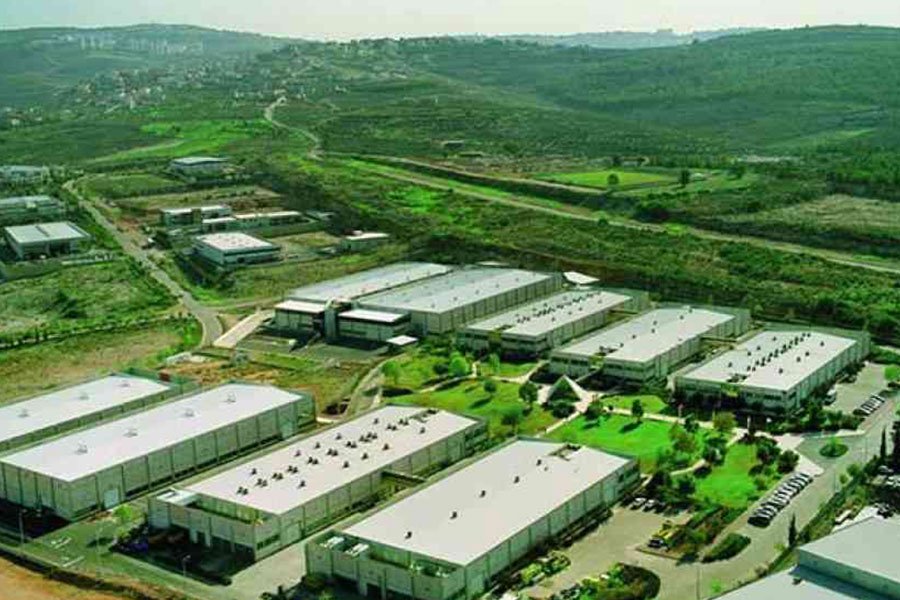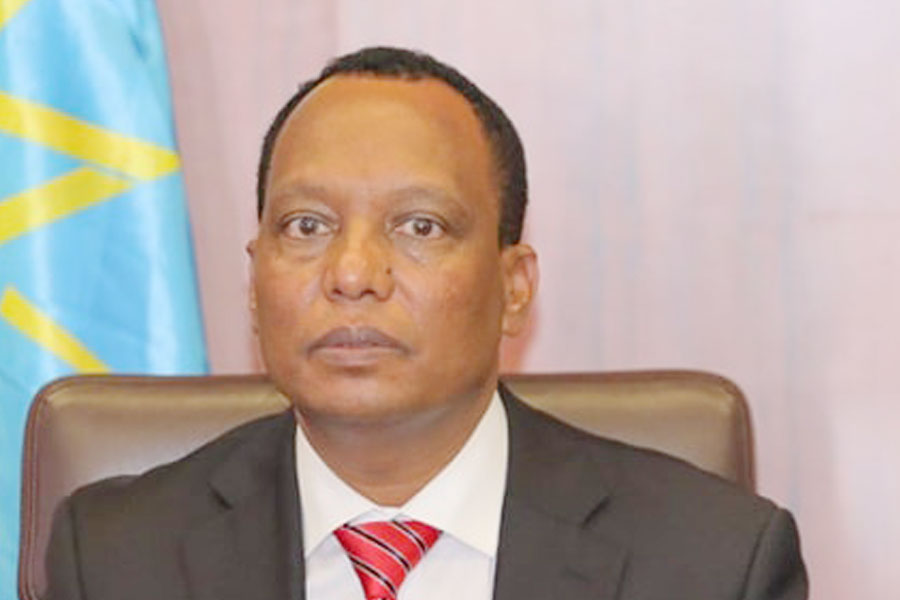
Radar | Apr 13,2025
Ethiopia's football scene is undergoing a transformative period, marked by ambitious aspirations and pressing issues. The country’s dream of hosting the 2029 Africa Cup of Nations (AFCON) has ignited excitement, but the reality of a struggling domestic league and a lack of adequate infrastructure casts a shadow.
A storm of financial woes had caught the six clubs competing in the premier league, as they struggled with a lack of viable stadiums to play in the capital for the past four years. The match between two veteran rival clubs Ethiopian Coffee S.C. and St. George S.C. was one of the biggest games attended in Addis Abeba Stadium, with entrance revenues reaching as high as one million Birr.
Since 2020, Addis Abeba Stadium has been undergoing renovation work. With that, delayed construction projects have forced the clubs to play in far-flung regional state stadiums, draining their finances and leaving fans frustrated.
Kifle Seife, general manager of the Ethiopian Premier League, laments the loss. Revenue from ticket sales now rarely crosses the 250,000 Br threshold, a fourth of the sums that Addis Abeba’s stadium could generate.
The capital’s absence of a usable, certified stadium has forced clubs into a nomadic existence. Clubs like Ethiopian Coffee S.C. and St. George S.C. could previously command over one million Birr in matchday revenue.
However, according to Fekade Mamo, president of Ethiopian Coffee, playing away from Addis Abeba sees them pocketing little more than 100,000 Br a game. He said the iconic football derbies have been reduced to lacklustre, sparsely attended matches, depriving clubs and sponsors of vital fan engagement.
Playing over 37 games a year, regional matches in places like Adama, Dire Dewa, and Hawassa cities cost Ethiopian Coffee close to a million Birr for a game—more than their income from tickets.
“The loss is too much,” he said.
For the national team, the Walias, the problem is no less acute. Since Addis Abeba cannot host international fixtures, the Ethiopian Football Federation (EFF) is forced to stage games abroad. Rental costs for stadiums, along with travel expenses, add up to a staggering 630,000 dollars in less than two years.
This diversion of funds away from player development and grassroots initiatives has further strained Ethiopia’s football prospects.
A lack of visibility has chased away more than just fans. With clubs facing poor attendance and low earnings, attracting sponsors becomes a nearly impossible task. DSTV, which is in the last year of its 22.5 million dollar contract with Ethiopian Premier League S.C., is on the fence about renewal.
The Federation’s former partnership with Walia Beer also ended last year, leaving Bunna Bank as the sole sponsor. This dwindling sponsor pool has left the Federation with a meagre 18 million Br annually—hardly enough to support a top-tier football ecosystem, according to Nebiyu Demesa, the Federation’s finance head. He believes the shift of home games to distant stadiums has cost the country around two million Birr per match in potential revenue from tickets, broadcasting rights, and advertising.
As financial losses mount, some clubs are beginning to re-evaluate their reliance on government support. Experts suggest that for these clubs, building independently managed stadiums offers the allure of financial autonomy and diversified revenue streams through rentals, concessions, and other income avenues.
Yet only a couple of clubs are truly financially independent while most rely on government support to stay afloat, with little room to invest in long-term stability.
The economic implications of a stadium extend far beyond ticket sales. Areas surrounding a stadium typically thrive when it is operational. However, recent renovations have led to the clearing out of businesses around Addis Abeba Stadium. The former Minister of Culture & Sport Kejela Merdasa, at the time, underscored the need for the vicinity to harmonize with the city’s layout and landscape. He stated that the area surrounding the stadium will undergo extensive cleaning and redesign to facilitate these changes.
Addis Abeba Stadium was built in the 1940s. With a long overdue renovation, the management said it included the import of 170,000 seats from China, upgraded lavatories, and a 48Sqm screen along with maintenance. The second phase alone has surpassed 292 million Br, underscoring a marked investment. However, the stadium was deemed unfit to host the premier league after hosting one game.
The challenges for Ethiopian football extend beyond logistical hurdles. A study by Solomon Seyoum titled Challenges in the Management of Football Clubs: The Case of Ethiopian Football Premier League, presented several critical issues facing Ethiopian football clubs, including a lack of FIFA-standard organisation, ineffective management systems, insufficient financial control, and deficiencies in public relations. He observed that it would hinder operational efficiency, limit visibility, and weaken the clubs' connection with their fans suggesting reforms to improve the overall management.
Analysts argue that Ethiopian clubs must overhaul their financial and operational models to survive, suggesting that improved management, alongside active community engagement, could help restore interest and attract sponsorship.
Players and clubs were banking on Adey Abeba Stadium, around the Haya Hulet area, being operational when the renovation of the veteran stadium began.
However, the saga of Adey Abeba Stadium illustrates Ethiopia’s infrastructural struggles. A project that began in 2015 envisioned to cost four billion Birr has faced delays due to foreign currency shortages, labour issues, and COVID-19, dragging its timeline far beyond the initial two-year target.
According to a Parliament report last year by Kejela, the construction has thus far consumed 64 million dollars. Located on Djibouti St. near the Haya Hulet area, price surges forced contractual renegotiations with the Chinese contractor. The 62,000-seat stadium project's first phase was completed for 2.47 billion Br.
Though a 50 million dollar cash infusion from the United Arab Emirates has provided a lifeline, the stadium is still years from completion. Under the direct watch of the Office of the Prime Minister, the project has added pressure to ready the stadium for Ethiopia’s proposed hosting of the 2029 Africa Cup of Nations (AFCON).
Yet infrastructure specialists like Abera Desalegn remain sceptical, noting Ethiopia’s longstanding difficulties in meeting international standards in basic amenities such as healthcare—a factor that could derail the aspiration.
"It might diminish the weight of the proposal," he said.
Without decisive action, Ethiopian football’s grand vision may remain a mirage, held back by bottlenecks, strained finances, and an outdated operational model. As clubs struggle to adapt to an ever-changing landscape, the need for strategic planning and investment in both infrastructure and management becomes paramount. The concern is not shared with officials.
Asmera Gizaw, head of sports facilities at the Ministry of Culture & Sports, is optimistic that the country will soon complete both Addis Abeba Stadium’s renovations and 12 additional stadium projects. He believes the Ministry will cover its expenses within five years of operations citing the 668 shops and parking lot of up to 5,000-vehicle-capacity as revenue earners.
Last week, Adey Abeba Stadium was visited by Prime Minister Abiy Ahmed (PhD) and Patrice Motsepe (PhD), CAF president during the general assembly when Ethiopia disclosed its ambition to host the 2029 edition of Africa’s premier international men’s football competition.
"Ethiopia stands ready to support a successful outcome of the meetings," said Abiy, on his social media platform.
PUBLISHED ON
Oct 27,2024 [ VOL
25 , NO
1278]

Fortune News | Sep 18,2022

Sunday with Eden | Jul 20,2024

Agenda | May 27,2023

Commentaries | Nov 26,2022


Dec 22 , 2024 . By TIZITA SHEWAFERAW
Charged with transforming colossal state-owned enterprises into modern and competitiv...

Aug 18 , 2024 . By AKSAH ITALO
Although predictable Yonas Zerihun's job in the ride-hailing service is not immune to...

Jul 28 , 2024 . By TIZITA SHEWAFERAW
Unhabitual, perhaps too many, Samuel Gebreyohannes, 38, used to occasionally enjoy a couple of beers at breakfast. However, he recently swit...

Jul 13 , 2024 . By AKSAH ITALO
Investors who rely on tractors, trucks, and field vehicles for commuting, transporting commodities, and f...

Oct 25 , 2025
The regulatory machinery is on overdrive. In only two years, no fewer than 35 new pro...

Oct 18 , 2025
The political establishment, notably the ruling party and its top brass, has become p...

Oct 11 , 2025
Ladislas Farago, a roving Associated Press (AP) correspondent, arrived in Ethiopia in...

Oct 4 , 2025
Eyob Tekalegn (PhD) had been in the Governor's chair for only weeks when, on Septembe...